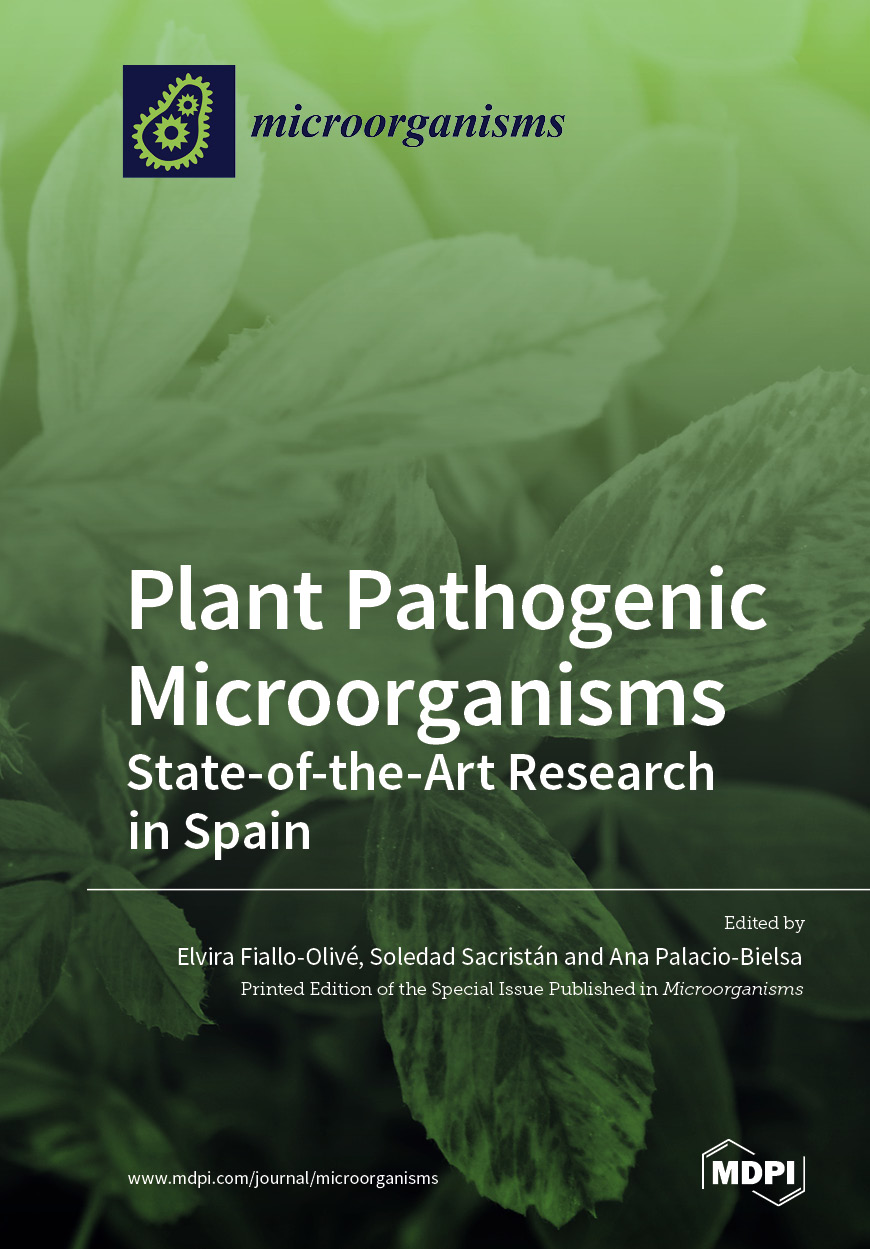Plant Pathogenic Microorganisms: State-of-the-Art Research in Spain
A special issue of Microorganisms (ISSN 2076-2607). This special issue belongs to the section "Plant Microbe Interactions".
Deadline for manuscript submissions: closed (31 October 2022) | Viewed by 36214
Special Issue Editors
Interests: plant virology; emergent plant diseases; virus taxonomy; plant–pathogen interactions; insect vectors
Special Issues, Collections and Topics in MDPI journals
Interests: plant-fungus interaction; fungal phytopathogens; fungal endophytes; plant immunity; genomics; transcriptomics
Interests: phytopathogenic bacteria; molecular biology; detection; epidemiology; control
Special Issue Information
Dear Colleagues,
Pathogenic microorganisms, including fungi, oomycetes, bacteria, viruses, and viroids, constitute a serious threat to agriculture worldwide. In Spain, one of the countries with the highest proportion of agricultural gross domestic product in Europe, agri-food industry is the country's main manufacturing activity. Consequently, the presence and emergence of microorganisms causing serious plant diseases to economically important crops are especially relevant. In line with this, Spain has an important number of research groups interested on plant pathology, with scientists working on many aspects of the pathogenic microorganism-plant interactions, from basic aspects to more applied studies. In recent years, numerous important advancements have been achieved by scientists working in Spain in the biological and molecular characterization of plant pathogenic microorganisms, in elucidating mechanisms of microbe pathogenesis, plant resistance to microbe infection, and plant-microbe-vector interactions. All these new achievements have provided essential knowledge for agricultural researchers worldwide.
The aim of this Special Issue is to provide a platform for Spanish researchers interested in plant pathogenic microorganisms to share their recent results. To achieve this, we are inviting you to submit research articles, short communications, and reviews related to the various aspects of plant pathogenic microorganisms: microbe–plant host interactions, microbe–vector interactions, microbe–microbe interactions, ecology, and control strategies.
We look forward to assembling an issue that highlights the state-of-the-art on plant pathogenic microorganism research in Spain.
Dr. Elvira Fiallo-Olivé
Dr. Soledad Sacristán
Dr. Ana Palacio-Bielsa
Guest Editors
Manuscript Submission Information
Manuscripts should be submitted online at www.mdpi.com by registering and logging in to this website. Once you are registered, click here to go to the submission form. Manuscripts can be submitted until the deadline. All submissions that pass pre-check are peer-reviewed. Accepted papers will be published continuously in the journal (as soon as accepted) and will be listed together on the special issue website. Research articles, review articles as well as short communications are invited. For planned papers, a title and short abstract (about 100 words) can be sent to the Editorial Office for announcement on this website.
Submitted manuscripts should not have been published previously, nor be under consideration for publication elsewhere (except conference proceedings papers). All manuscripts are thoroughly refereed through a single-blind peer-review process. A guide for authors and other relevant information for submission of manuscripts is available on the Instructions for Authors page. Microorganisms is an international peer-reviewed open access monthly journal published by MDPI.
Please visit the Instructions for Authors page before submitting a manuscript. The Article Processing Charge (APC) for publication in this open access journal is 2700 CHF (Swiss Francs). Submitted papers should be well formatted and use good English. Authors may use MDPI's English editing service prior to publication or during author revisions.
Keywords
- plant pathogenic microorganisms
- microbe–plant interactions
- microbe–vector interactions
- microbe–microbe interactions
- genetic resistance
- control
- epidemiology








